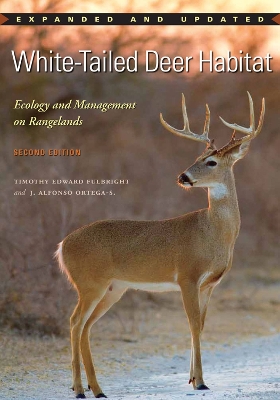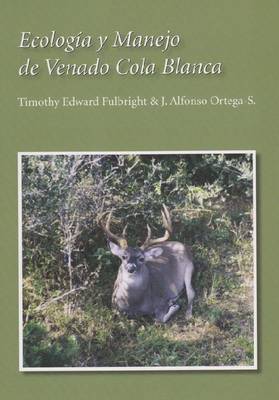Perspectives on South Texas, sponsored by Texas A&M University-Kingsville
2 total works
White-Tailed Deer Habitat
by Timothy Edward Fulbright and Jose Alfonso Ortega-Santos
Published 1 February 2006
The original, 2006 edition of Timothy Edward Fulbright and J. Alfonso Ortega-S.’s White-Tailed Deer Habitat: Ecology and Management on Rangelands was hailed as “a splendid reference for the classroom and those who make their living from wildlife and the land” and as “filling a niche that is not currently approached in the literature.”
In this second, full-colour edition, revised and expanded to include the entire western United States and northern Mexico, Fulbright and Ortega-S. provide a carefully reasoned synthesis of ecological and range management principles that incorporates rangeland vegetation management and the impact of crops, livestock, predation, and population density within the context of the arid and semiarid habitats of this broad region. As landowners look to hunting as a source of income and to the other benefits of managing for wildlife, the clear presentation of the up-to-date research gathered in this book will aid their efforts. Essential points covered in this new edition include: White-tailed deer habitat requirements; Nutritional needs of White-tailed deer; Carrying capacity; Habitat management; Hunting.
Focused across political borders and written with an understanding of environments where periodic drought punctuates long-term weather patterns, this revised and expanded edition of White-Tailed Deer Habitat: Ecology and Management on Rangelands will aid landowners, researchers, and naturalists in their efforts to integrate land management and use with sound ecological practices.
In this second, full-colour edition, revised and expanded to include the entire western United States and northern Mexico, Fulbright and Ortega-S. provide a carefully reasoned synthesis of ecological and range management principles that incorporates rangeland vegetation management and the impact of crops, livestock, predation, and population density within the context of the arid and semiarid habitats of this broad region. As landowners look to hunting as a source of income and to the other benefits of managing for wildlife, the clear presentation of the up-to-date research gathered in this book will aid their efforts. Essential points covered in this new edition include: White-tailed deer habitat requirements; Nutritional needs of White-tailed deer; Carrying capacity; Habitat management; Hunting.
Focused across political borders and written with an understanding of environments where periodic drought punctuates long-term weather patterns, this revised and expanded edition of White-Tailed Deer Habitat: Ecology and Management on Rangelands will aid landowners, researchers, and naturalists in their efforts to integrate land management and use with sound ecological practices.
Ecología y Manejo de Venado Cola Blanca
by Timothy Edward Fulbright and Jose Alfonso Ortega-Santos
Published 30 June 2007
Originally published in English as ""White-Tailed Deer Habitat: Ecology and Management on Rangelands"" (Texas A&M University Press, 2005), this Spanish-language edition brings a valuable management tool to a new reading audience. Unlike other books on white-tailed deer in places where rainfall is relatively high and the environment stable, this book takes an ecological approach to deer management in the semiarid lands of Oklahoma, Texas, and northern Mexico. These are the least productive of white-tail habitats, where periodic drought punctuates long-term weather patterns. The book's focus on this landscape across political borders is one of its original and lasting contributions and makes this Spanish language edition particularly appropriate.

